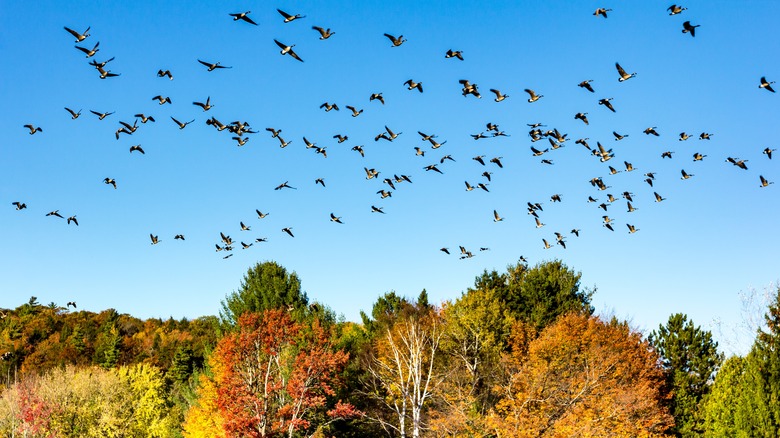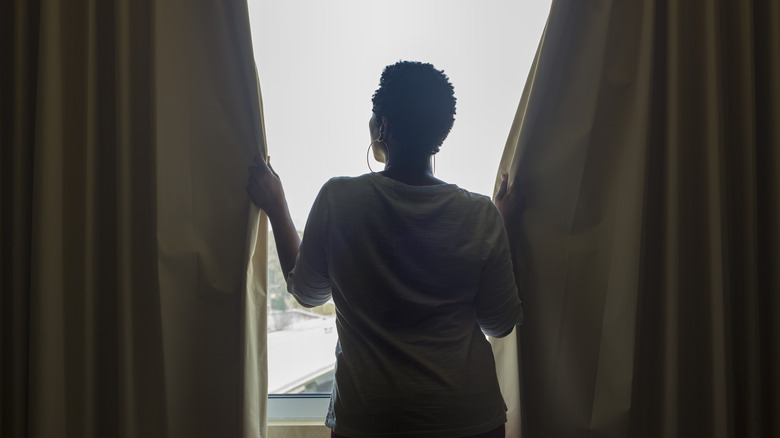Tips For Choosing Outdoor Lighting That's Safer For Migratory Birds
Every year, millions of birds migrate across continents, flying thousands of miles to reach their breeding or wintering grounds. These journeys are often pretty dangerous, with birds navigating all sorts of different landscapes, from oceans to deserts, and harsh weather conditions. For instance, the tiny ruby-throated hummingbird travels 500 miles, or more, from North America to Central America, while the impressive arctic tern journeys from the Arctic to the Antarctic, covering around 18,000 miles annually. These are only a few examples of these birds' incredible journeys, and the scale of their flights is simply staggering.
Unfortunately, light pollution from urban areas and residential neighborhoods can severely disrupt these migration patterns. Artificial lights can disorient birds, leading them off course and causing fatal collisions with buildings or exhaustion from prolonged navigation. Luckily, there are plenty of ways to help birds during migration season, such as switching to bird-friendly lighting and installing motion sensors or timers on their lights.
What lighting choices homeowners can make to help migratory birds
Homeowners play a pretty big role in mitigating the impact of light pollution on migratory birds. One effective strategy is to switch to bird-friendly lighting. Using lights with a warm color temperature (below 3000K) can reduce the disorienting effects on birds, especially when compared to blue-rich white light. These lights emit a softer, yellowish glow that is less likely to attract and confuse them.
Another way to minimize your "light footprint" is to rethink adding extra lighting to your garden, and install motion sensors or timers instead. These devices ensure that lights are only on when necessary, minimizing unnecessary illumination during peak migration periods. With millions of birds dying each year flying into lit buildings at night, this would be a major step to help reduce the impact on migration. Finally, shielding outdoor lights to direct illumination downward rather than up or outward can help reduce skyglow, making it easier for migrating birds to stay on track.
Other initiatives homeowners can take to save migratory birds
Besides changing the type of lights, homeowners can also adjust how they use them at night to further protect migratory birds. Firstly, turning off non-essential lights, especially during peak migration seasons in spring and fall, can significantly decrease light pollution. Rather than get disoriented or even fly into the lit-up homes and buildings, the birds feel more ready to sleep for the night or continue on their flight. This simple action helps birds and also helps reduce your energy costs at home, making it a total win-win.
Secondly, using curtains or blinds at night can prevent indoor lights from spilling outside and contributing to light pollution. By closing curtains, homeowners can help make sure that their homes are dark from the outside while still having the necessary indoor lighting. It might seem like a simple solution, but every little bit helps.
Lastly, participating in community efforts or initiatives, such as Audobon's Lights Out Program, that promote bird-safe lighting practices can amplify individual efforts. When entire neighborhoods or cities adopt bird-friendly lighting, the cumulative effect can create safer migratory corridors for birds, potentially saving thousands, if not millions, of birds each year.


